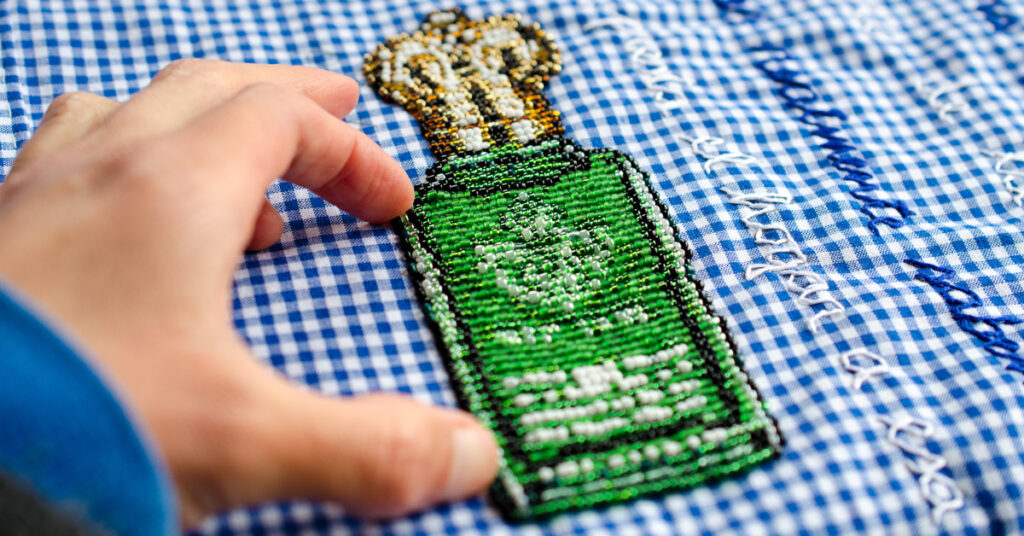
Daniela Lara Espinoza, Perfume (detail), part of the series ‘La trato como reina’, 2020, bead embroidery.
Daniela Lara Espinoza turns the craft of her maternal forebears into a political voice for today’s generation.
(A message to the reader in Spanish.)
(A message to the reader in English.)
As a Chilean female artist, my main practice is bead embroidery. I began using this practice in 2007 when I was an art student at a university in Chile. Back then, we were encouraged by one of our lecturers to use materials and techniques familiar to us.
I come from a family of seamstresses on my mother’s side. I always had an interest in learning about the materials and techniques used in dressmaking, and my grandmother and mother were always keen to teach me.
Since I was young, I was also very fond of shiny objects like sequins and glass beads, which I used to decorate clothes and to make bracelets and necklaces. Therefore, for my undergraduate projects, I decided to explore the use of glass beads sewn to fabrics to develop artworks.
In 2007, as a university art student in Chile, I did not know other artists who used glass beads for their work, so I thought it would be an interesting and original practice to develop. Because I had no references on how to use this material to reproduce images (I was interested in making portraits back then), the technique I use until now has been the product of many years of experimentation.
For my final project as an undergraduate student, I aimed to challenge the association of embroidery with naive and innocent domestic decorative craft by reproducing images of extreme (fictional) violence. My purpose was to challenge the audience, raising questions such as, is this beautiful, is this horrible or both? However, I did not seek to receive their feedback; I just presented my works at exhibitions without any form of communication with audiences.
This issue concerned me and I addressed it when I started my PhD research, ‘La trato como reina [I treat her like a queen]’ (2016-2021). In this sense, for my doctoral research, I used my hand-embroidered artworks to encourage a reflection on crafts and the handmade, connecting with an audience and opening a space to raise consciousness and confront a subject of a sensitive nature, such as violence against women in Chile and Latin America.
Technique

Daniela Lara Espinoza, Morada, part of the series ‘Serie blanca’, 2010, bead embroidery on white synthetic fabric, 28.5 cm
The connection I have with bead embroidery is not historical. Glass beads are not a material that is culturally related to a specific practice of an indigenous community in Chile. However, in North America, beading is a technique widely used by native communities, such as Ojibwe, Sioux, Inuit and Métis. Beadwork is also used by contemporary Canadian artists, such as Christi Belcourt, Katherine Boyer and Teresa Burrows.
I met Canadian glass bead artist Teresa Burrows in Scotland in October 2016. We both participated in a symposium called Naked Craft at Edinburgh College of Art (ECA), at the University of Edinburgh, where I was a PhD researcher. Ever since we met, Teresa has given me a helpful insight into beading and the work of indigenous makers and contemporary artists from North America, mainly from Canada, who work with bead embroidery and I have found great inspiration in their work.
In technical terms, makers from indigenous communities in North America tend to sew their beads in a mixture of circles, semi-circles, straight, diagonal and curved lines. The latter marks a big difference with my work because I mainly use straight lines to create my images. Nevertheless, inspired by these traditional works, I incorporated changes into one of my embroideries which reproduces a Christian cross. (Additionally, also for this work, I used goldwork embroidery techniques and materials inspired by medieval English embroidery.)
Seeing traditional beadwork from indigenous communities, such as the Métis, in clothing articles and the beaded garments of Teresa Burrows and American contemporary artist Big Chief Demond Melancon was also a great inspiration for my research. Observing the construction of their large garments encouraged me to work beyond my embroidery hoops and frames, exploring the use of my work in pieces of clothing directly related to the topic I was researching. In this sense, seeing how beads could be used on a larger scale encouraged me to experiment with different forms of presentation of my artworks. Thus, I sewed my embroidered pieces into three Chilean school aprons in the form of capes to directly address the fact that children are often victims of gender-based violence and also often indirect victims of violence against women. Additionally, these aprons are associated with the notion of young girls, boys and adolescents who are beginning their integration into the Chilean educational system and a patriarchal system.
The aprons of La trato como reina
- Daniela Lara Espinoza, Mobile-phone screen (detail), part of the series ‘La trato como reina’, 2020, bead embroidery
- Daniela Lara Espinoza, Heart (detail), part of the series ‘La trato como reina’, 2020, bead embroidery
- Daniela Lara Espinoza, Christian Cross (detail), part of the series ‘La trato como reina’, 2020, bead embroidery and goldwork embroidery
- Daniela Lara Espinoza, Coat of Arms (detail), part of the series ‘La trato como reina’, 2020, bead embroidery
- Daniela Lara Espinoza – Daniela Lara Espinoza, Reloj (detail), part of the series ‘La trato como reina’, 2020, bead embroidery
I purchased the school aprons I used for my work from retail stores in Chile. The quality of their fabric is poor, as it is very thin and synthetic; also, their construction is basic, and the seams are weak. This was useful as I wanted to exacerbate the contrast between mass-produced items and the unique handmade embroideries I made for my research.
I also incorporated hand-embroidered texts into my bead embroideries. The texts on the pink apron come from various sources, such as a Chilean folk song, the start message on the Spanish version of Facebook’ ¿Qué estás pensando? [What are you thinking?]’, a series of illegible texts and a fragment of a text that mixes fiction and reality, which I wrote in 2017 as I was the object of sexist abuse in academia.
The embroidered texts in one of the aprons (blue) came from the contributions made by a Chilean audience reached in July 2020 using digital tools (a video and an online survey). Initially, my plan was to make in-person presentations where participants could touch the artworks and discuss the subjects addressed. However, because of the pandemic restrictions, I had to virtually connect with an audience.
In looking for collaborators for this research, I sought to address and contest gender inequalities. I explored the possibility of giving a voice to those who may not have previously had the chance to share their opinions publicly or who might not feel comfortable in their close circles to talk about these issues.
The collaborators of my research became actively involved in the discussion to confront gender asymmetries, sexism and misogyny in Chile. They committed to making an effort to share this issue further with their contacts to generate positive social changes.
Finally, through my research, I sought to acknowledge the positive potential in arts-based research practices to achieve more profound and meaningful connections with audiences, engage with them, and encourage them to take an active role in building more tolerant and respectful societies.
- Daniela Lara Espinoza, La trato como reina (part 2), 2020, bead embroidery on blue gingham fabric and hand embroidered texts, 116 x 49 cm
- Daniela Lara Espinoza, La trato como reina (part 3), 2020, bead embroidery and goldwork embroidery on brown-golden fabric, 100 x 49 cm
- Daniela Lara Espinoza, La trato como reina (part 1), 2020, bead embroidery on pink gingham fabric and hand embroidered texts, 148 x 38 cm
Further reading and watching
- Lara Espinoza, D. (2021) ‘’La trato como reina [I treat her like a queen]’, Daniela Lara-Espinoza’, Decorating Dissidence, 13.
- Lara Espinoza, D. (2020) Video-presentación proyecto La trato como reina [with English subtitles]. 18 July.
- Lara Espinoza, D. (2020) Bordado con mostacillas (escudo de armas) | Bead embroidery (coat of arms). 9 August.
- Lara Espinoza, D. (2019) ‘Entrevista a Daniela Lara’. Interview with Daniela Lara Espinoza. Interviewed by Roxana Gómez Tapia for IACH, 21 November.
- Lara Espinoza, D. (2019) Bordado con mostacillas de vidrio | Embroidery with glass beads. 17 December.
- Lara Espinoza, D. (2018) Proceso bordado con mostacillas | Process of making a bead embroidery. 11 January.
- University of Oregon Museum of Natural and Cultural History (no date) ‘Métis Textiles’.
- Demond Melancon’s website www.demondmelancon.com and IG: @qadamawi
- Teresa Burrow’s IG: @artist_teresaburrows
About Daniela Lara-Espinoza
 Daniela Lara-Espinoza is a Chilean PhD researcher at Edinburgh College of Art, The University of Edinburgh (funded by ANID Becas Chile). Her main artistic practice is bead embroidery. For her PhD research, Daniela explored the role of hand-embroidered artworks as an active communication tool to raise awareness of the high levels of violence against women in Chile and Latin America; questioning and contesting the patriarchal societies. She holds a Master’s Degree in Gender Studies and Culture from the Universidad de Chile (funded by CONICYT). Daniela is currently in Chile, finishing her PhD studies and actively sharing her research ‘La trato como reina [I treat her like a queen]’. Visit danielalaraespinoza.wordpress.com and IG: @muyconocida
Daniela Lara-Espinoza is a Chilean PhD researcher at Edinburgh College of Art, The University of Edinburgh (funded by ANID Becas Chile). Her main artistic practice is bead embroidery. For her PhD research, Daniela explored the role of hand-embroidered artworks as an active communication tool to raise awareness of the high levels of violence against women in Chile and Latin America; questioning and contesting the patriarchal societies. She holds a Master’s Degree in Gender Studies and Culture from the Universidad de Chile (funded by CONICYT). Daniela is currently in Chile, finishing her PhD studies and actively sharing her research ‘La trato como reina [I treat her like a queen]’. Visit danielalaraespinoza.wordpress.com and IG: @muyconocida

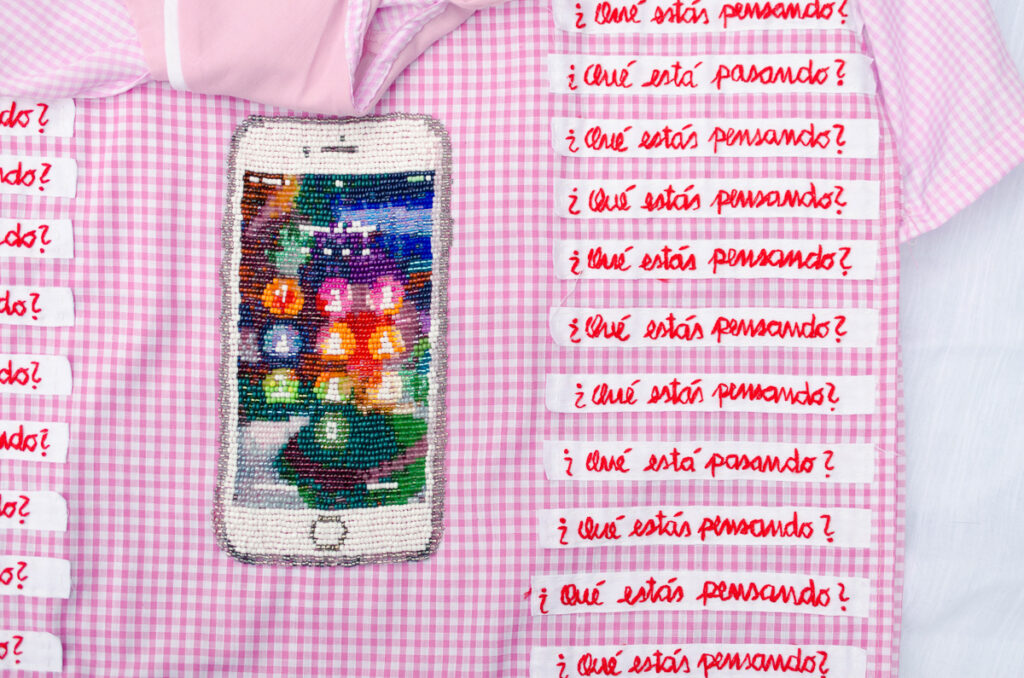

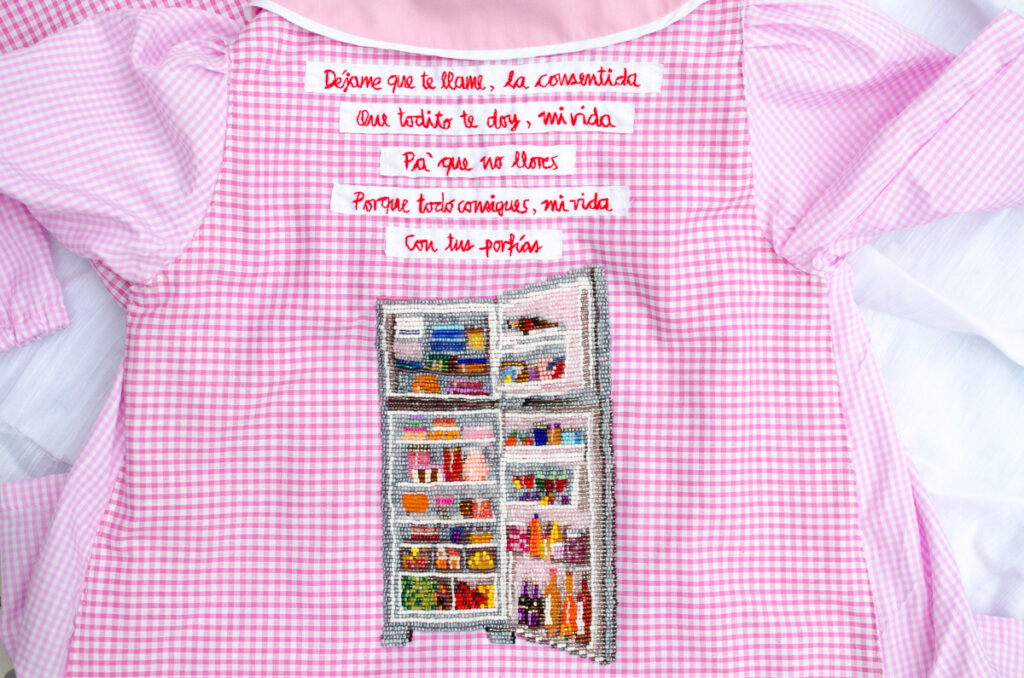

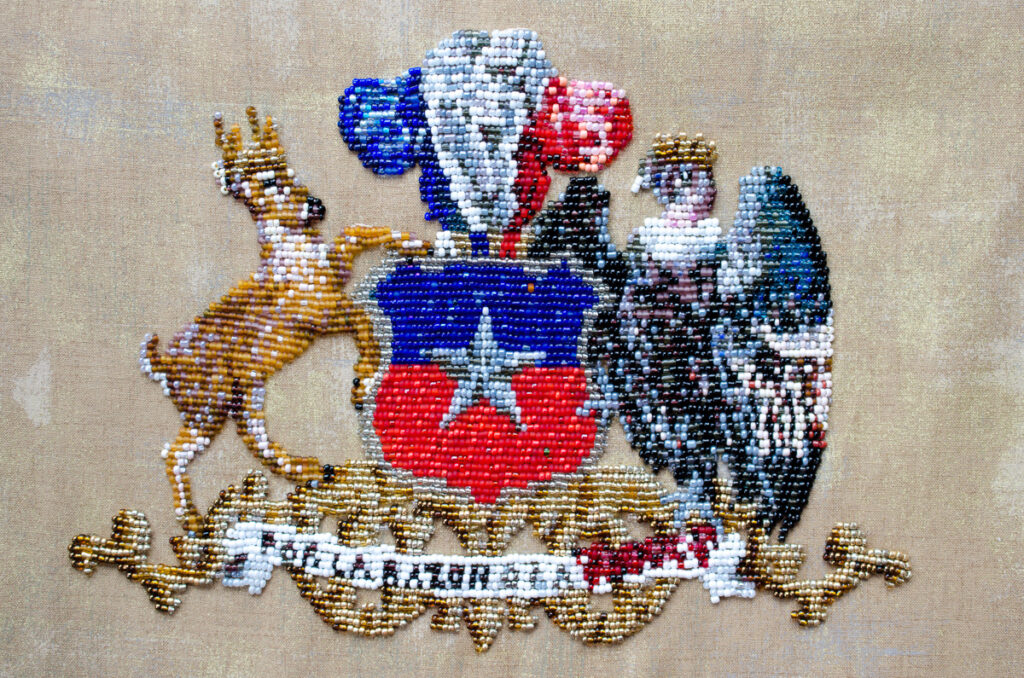
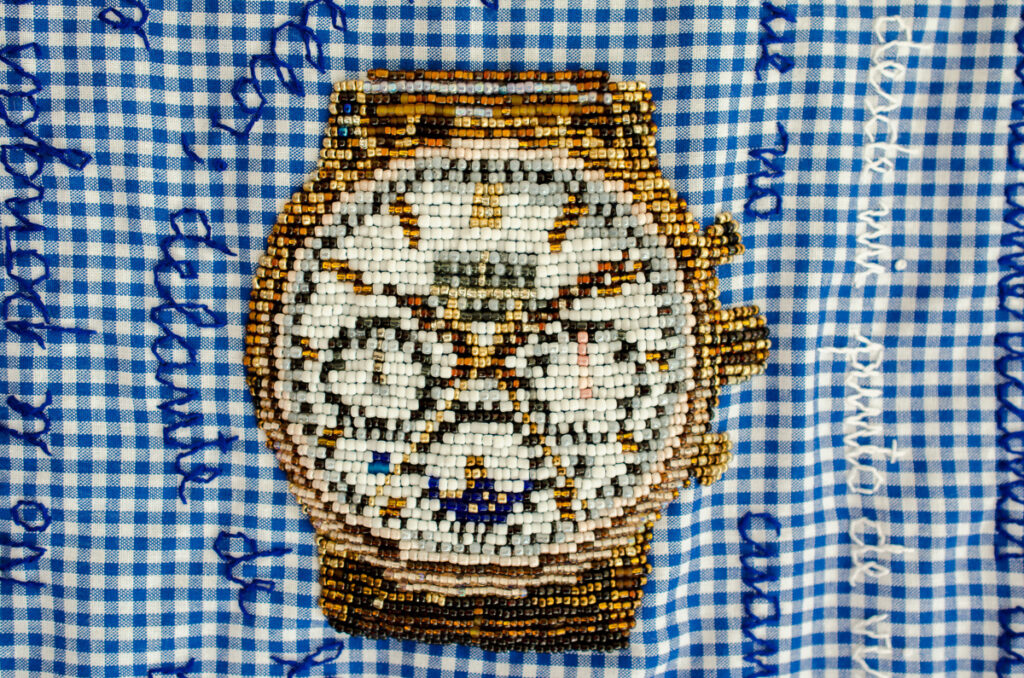
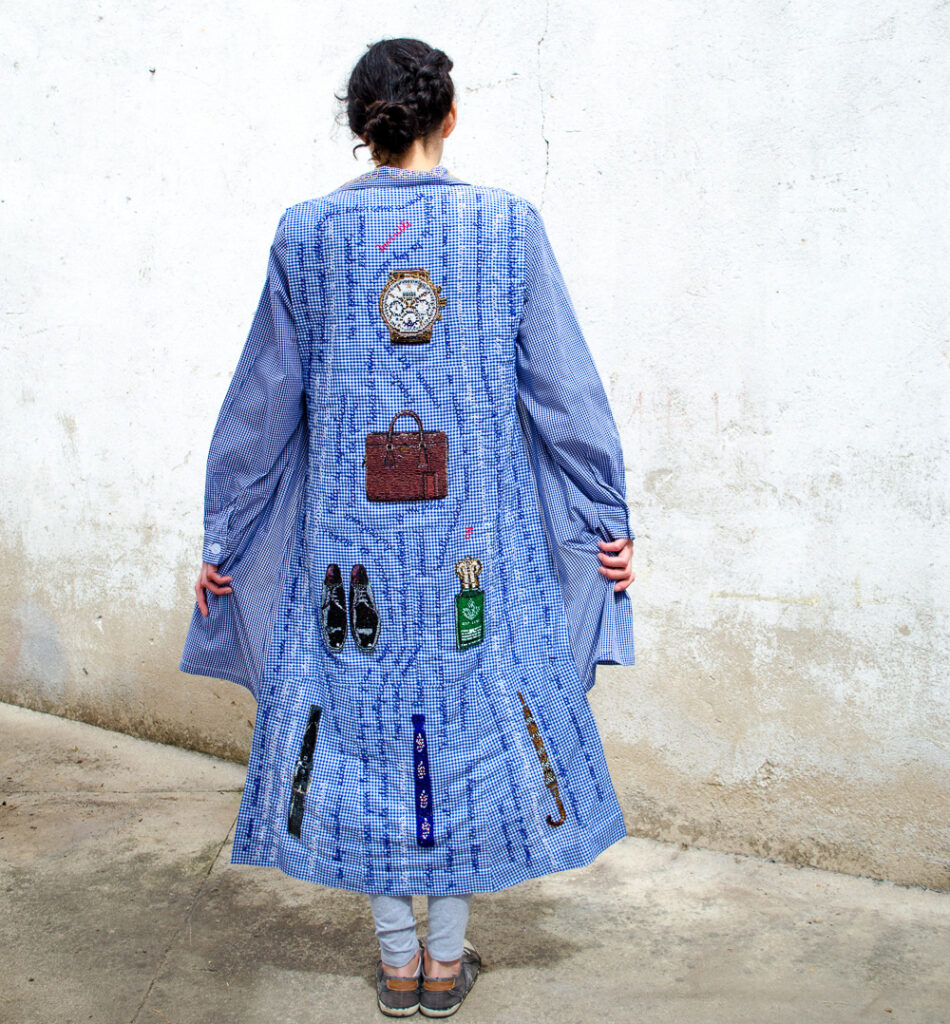
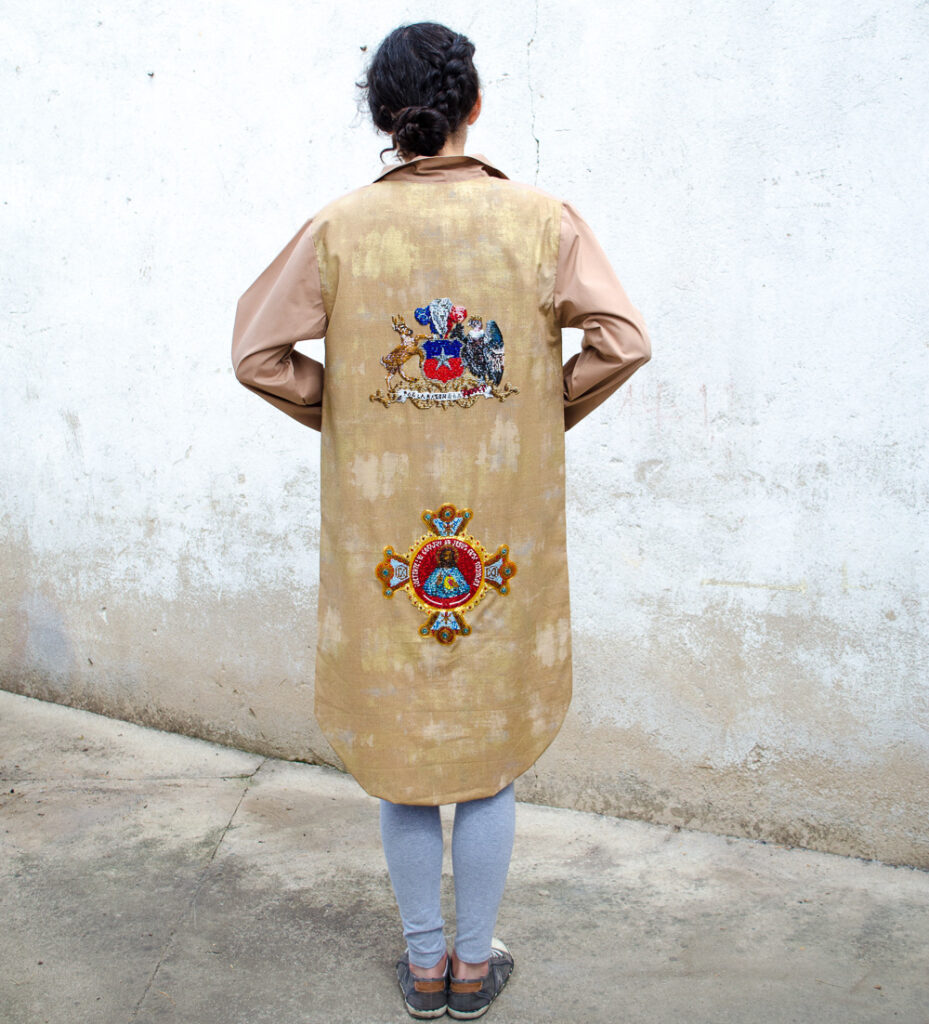
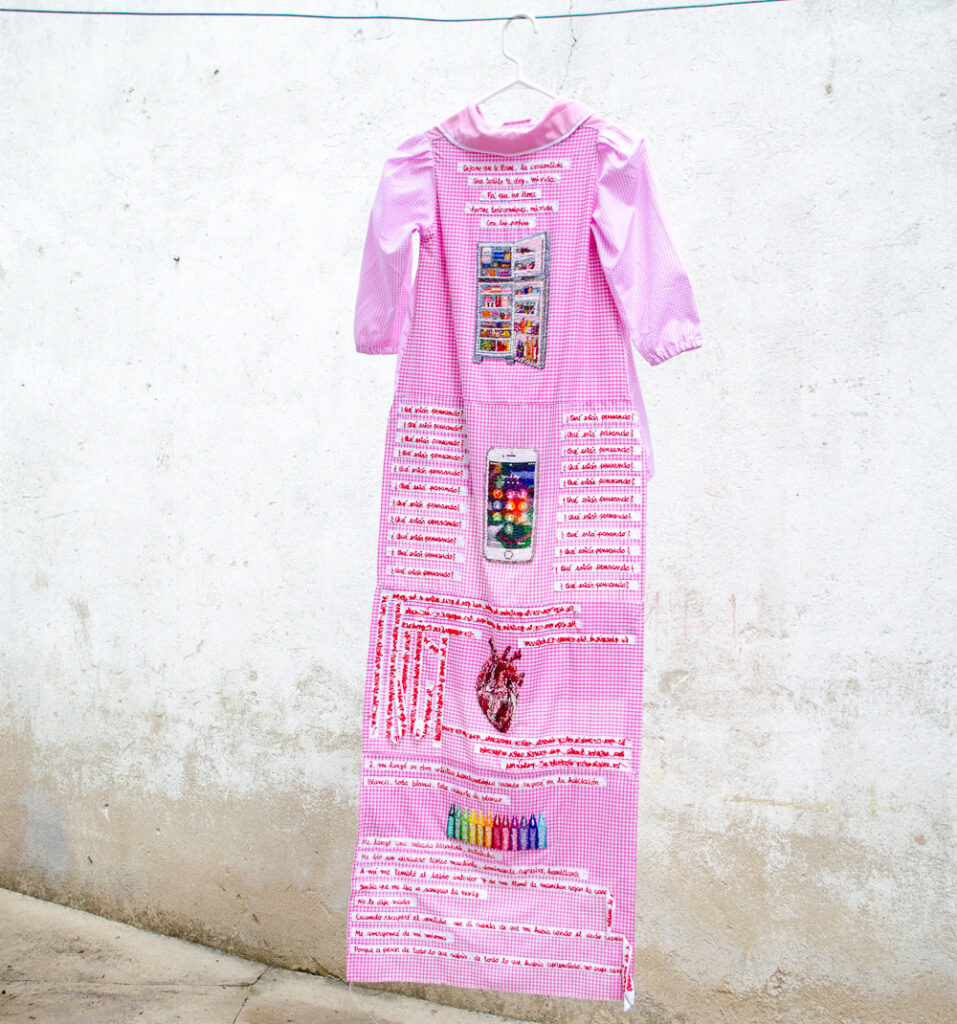

Comments
Que maravilla